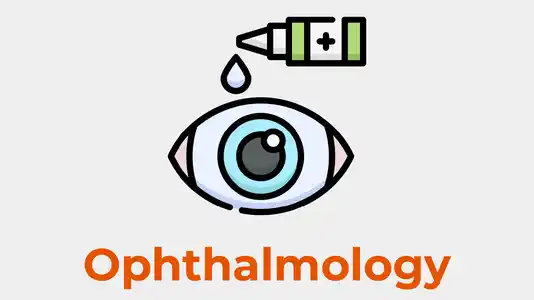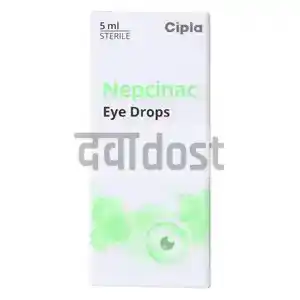Prescription Required
Introduction to Nepacin Eye Drop
Nepacin Eye Drop is a local treatment incorporating Nepafenac engineered for external application exclusively on the eyes. This concoction is devised to treat eye ailments, and strict compliance with directions of use is critical for achieving the best results.
The action mechanism of Nepafenac involves diminishing ocular inflammation. Being a nonsteroidal anti-inflammatory drug (NSAID), it assists in mitigating symptoms linked with diverse eye ailments thus enhancing eye well-being.
It is suggested to engage in consultations with your healthcare expert for any uncertainties or particular directives.
Possible side effects may incorporate redness in eyes, migraines, swelling of eyes, alterations in vision, and skin eruptions. Regular surveillance for the occurrence of these effects is crucial, and immediate consultation from your healthcare provider is needed if they become chronic or intensify.
There are several crucial precautions that need to be adhered to while using this suspension. Key measures include avoiding eye contact and immediate washing on eventual exposure.
A word of caution for those with known hypersensitivity. It is not meant to be used on young children. A cessation is advised if irritation or allergic reactions become apparent, immediate consultation with a healthcare expert in such situations is essential.
In case you miss a dosage, administer it instantly. However, if it's nearly time for the next dose, better to skip the missed dose and continue with the regular regimen.
Avoid administering extra medication to make up for the missed dose as it could lead to complications. Involve your healthcare provider in discussions about missed doses for appropriate ocular management.
Safety Advice for Nepacin Eye Drop
- High risk
- Moderate risk
- Safe

Avoid consuming alcohol when on this medication as it may lead to an increased risk of stomach bleeding.

This medication does not typically cause negative effects during pregnancy.

This medication is typically safe and does not cause adverse effects during breastfeeding.

This medication generally has no direct adverse impacts on the kidney, but caution is recommended.

This drug does not often cause direct negative effects on the liver, but use it with caution.
How Nepacin Eye Drop works
This is a nonsteroidal anti-inflammatory medication (NSAID) utilized in eye care for minimizing inflammation and discomfort following lens replacement operations. It works by impeding the functionality of cyclo.
How To Use Nepacin Eye Drop
- For external application only; avoid swallowing.
- Examine the label for accurate usage directions before implementing.
- Position the dropper close to the eye without making physical contact.
- Modestly press the dropper, depositing the remedy inside the lower eyelid.
- Remove any surplus fluid meticulously.
- Contact your medical practitioner for any doubts or detailed directives.
Special Precautions About Nepacin Eye Drop
- Avoid contact with eyes; rinse immediately if exposed.
- Use with caution in patients with known hypersensitivity.
- Not for use in pediatric patients.
- Discontinue if irritation or allergic reactions occur.
- Consult a healthcare professional for guidance.
Benefits Of Nepacin Eye Drop
- Effective in managing inflammation post cataract surgery.
- Alleviates pain and reduces swelling.
- Used to treat infections.
Side Effects Of Nepacin Eye Drop
- Eye redness
- Headache
- Eye swelling
- Vision changes
- Rash
Similar Medicine Of Nepacin Eye Drop
What If I Missed A Dose Of Nepacin Eye Drop
Disease Explanation

No disease explanation.
FAQ's on Nepacin Eye Drop
What is Nepafenac used for?
What is cataract surgery procedure?
How Safe Is Cataract Surgery?
What are the side effects of eye drops?
What is Allergan eye drops used for?
When should I take Moxifloxacin eye drops?
What is Nepacin ophthalmic suspension used for?
What is Nepacin ophthalmic suspension?
Do steroid eye drops raise blood pressure?
What is prednisolone acetate eye drops used for?
What is sodium hyaluronate eye drops?
What is Nevanac eye drops used for?
What is bromfenac ophthalmic solution used for?
 Written By
Written By
Rahul kumar
Content Updated on
Wednesday, 24 January, 2024Prescription Required
Nepacin Eye Drop

Discover the Benefits of ABHA Card registration
Simplify your healthcare journey with Indian Government's ABHA card. Get your card today!
Create ABHANepacin Eye Drop

















